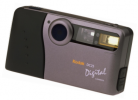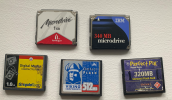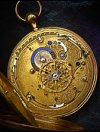Interesting article. Thanks for sharing. I did not know there were different types of DNG files and while I don't think it means much to me, it is good to know.
There are a few basic concepts that the article doesn't fully explain. When your camera is set to generate a jpg image, after capture the cameras itself is engaged as a microcomputer processing the raw data into a compressed jpg image which is universally recognized. When the camera is set to RAW only, the camera captures and records only the raw data and a RAW image processor is required to covert the raw data to jpg, PSD, TIFF, etc.
Read on if you dare... (long. sorry.)
There is some history to the use of the RAW image file that isn't necessarily relevant today but worth mentioning. Back in the day when the very first affordable ($5000 per body) DSLR (Nikon D1) came onto the market RAW images files were available, but you had to buy the proprietary and expensive NIKON RAW PROCESSING program. It was lame and few photographers that I know purchased it. But about the time Nikon came out with its 2nd generation DLSR, the D1x a program, Capture One Pro became available. It was expensive ($500? at the time). But it was worth it.
Until Capture 1 Pro was available images had to be opened one by one, color corrected and saved individually- a very time consuming process especially considering the processing speed of computers at that time (2001?). Capture One Pro offered something called "proxy images" which meant you could adjust the parameters of the image in real time via the proxy image. The adjustment data was saved automatically for later processing. The beauty of it was that you could adjust all the elements, exposure, brightness, highlight, shadow etc, even saving and pasting similar corrections on multiple images which was a huge time saver. With large volumes of images, it wasn't prudent to process the images immediately. So what many of us would do is do all the corrections as convenient, but then hit the "process button" before we left the studio for the images to be processed overnight, unattended. We couldn't do that with jpgs, so RAW images became the defactor capture formate, not so much because the images were superior, but as a convenience for rapid processing. The average number of images I could corrected with the early Capture One Pro was about 1000 images per hour, exponentially greater than correcting jpg images.
With today's high speed computers, and updated imaging programs, much of what was exclusive to RAW images is now available to jpgs as well and most batches can be processed while we wait, sometimes in the background.
The article glances by stating the cost of data cards is less expensive than ever before. What an understatement. Back in the early days I remember paying in excess of $300 for a 340MB microdrive (a micro floppy). Today, depending on the camera's read/write speed, a 128GB card can be had for around $20. Also, those of us who would shoot on location would often bring equipment to back up the microdrives and subsequent solid state drives on location as we continued to shoot to make sure that any digital failures could be re-shot before leaving the location.
It is also worth mentioning that Lightroom is not the only game in town. There are many programs that meet or exceed Lightroom's capabilities for processing RAW images. While I still have a latter day edition of Capture One Pro I do many of the processing jobs through On 1 Camera RAW, a direct competitor to Lightroom (and better for many things IMO) with an initial purchase off $99 (and inexpensive upgrades), often with 20% discount coupons available. Just sayin'.














